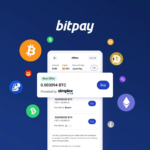About Lightning Network
The Lightning Network is a decentralized system for instant, high-volume micropayments that removes the risk of delegating custody of funds to trusted third parties. Bitcoin, the world’s most widely used and valuable digital currency, allows anyone to send value without a trusted intermediary or depository. Bitcoin contains an advanced scripting system allowing users to program instructions for funds. There are, however, some drawbacks to bitcoin’s decentralized design.
Lightning Network Defi Coin Transactions confirmed on the bitcoin blockchain take up to one hour before they are irrevesible. Micropayments, or payments less than a few cents, are inconsistently confirmed, and fees render such transactions unviable on the network today. The Lightning Network solves these problems. It is one of the first implementations of a multi-party Smart Contract (programmable money) using bitcoin’s built-in scripting. The Lightning Network is leading technological development in multiparty financial computations with bitcoin
Lightning Network Defi Facts
| Lightning Network | Facts |
|---|---|
| Defi Coin Name | Lightning Network |
| Short Name | BADGER |
| Payment | Instant Payment |
| Source | Click Here To View Source |
| Chat Option | Click Here To Visit Chat |
| Document | Click Here To View Document |
| Official Website | Click Here To Visit |
How it Works
The Lightning Network is dependent upon the underlying technology of the blockchain. By using real Bitcoin/blockchain transactions and using its native smart-contract scripting language, it is possible to create a secure network of participants which are able to transact at high volume and high speed.
Bidirectional Payment Channels.
Two participants create a ledger entry on the blockchain which requires both participants to sign off on any spending of funds. Both parties create transactions which refund the ledger entry to their individual allocation, but do not broadcast them to the blockchain. They can update their individual allocations for the ledger entry by creating many transactions spending from the current ledger entry output. Only the most recent version is valid, which is enforced by blockchain-parsable smart-contract scripting. This entry can be closed out at any time by either party without any trust or custodianship by broadcasting the most recent version to the blockchain.
Lightning Network.
Lightning Network Defi Coin creating a network of these two-party ledger entries, it is possible to find a path across the network similar to routing packets on the internet. The nodes along the path are not trusted, as the payment is enforced using a script which enforces the atomicity (either the entire payment succeeds or fails) via decrementing time-locks.
Blockchain as Arbiter.
As a result, it is possible to conduct transactions off-blockchain without limitations. Transactions can be made off-chain with confidence of on-blockchain enforceability. This is similar to how one makes many legal contracts with others, but one does not go to court every time a contract is made. By making the transactions and scripts parsable, the smart-contract can be enforced on-blockchain. Only in the event of non-cooperation is the court involved – but with the blockchain, the result is deterministic.
Powered by Blockchain Smart Contracts
Lightning is a decentralized network using smart contract functionality in the blockchain to enable instant payments across a network of participants.
Transactions for the Future
Instant Payments.
Lightning Network Defi Coin-fast blockchain payments without worrying about block confirmation times. Security is enforced by blockchain smart-contracts without creating a on-blockchain transaction for individual payments. Payment speed measured in milliseconds to seconds.
Scalability.
Capable of millions to billions of transactions per second across the network. Capacity blows away legacy payment rails by many orders of magnitude. Attaching payment per action/click is now possible without custodians.
Low Cost.
By transacting and settling off-blockchain, the Lightning Network allows for exceptionally low fees, which allows for emerging use cases such as instant micropayments.
Cross Blockchains.
Cross-chain atomic swaps can occur off-chain instantly with heterogeneous blockchain consensus rules. So long as the chains can support the same cryptographic hash function, it is possible to make transactions across blockchains without trust in 3rd party custodians.
Scalability.
Lightning Network Defi Coin bitcoin network will need to support orders of magnitude higher transaction volume to meet demand from automated payments. The coming increase in internet-connected devices needs a platform for machine-to-machine payments and automated micropayment services. Lightning Network transactions are conducted o the blockchain without delegation of trust and ownership, allowing users to conduct nearly unlimited transactions between other devices








